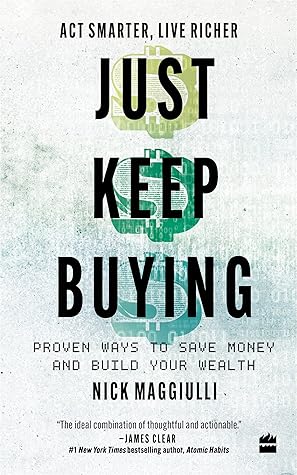More on this book
Community
Kindle Notes & Highlights
If your expected savings are higher, then you need to focus more on saving money and adding to your investments. However, if your expected investment growth is higher, then spend more time thinking about how to invest what you already have.
In biology this concept is called phenotypic plasticity, or the ability for an organism to change its physiology in response to its environment.
incomes are becoming less stable, not more stable, over time.
the biggest determinant of an individual’s savings rate is the level of their income.
savings rates were positively correlated with wealth in every decade in U.S. history from 1910 to 2010, with the exception of the 1930s.4
save what you can.
there is overwhelming evidence that the opposite seems to be happening—retirees aren’t spending enough.
the fear of running out of money in retirement is a bigger threat to retirees than actually running out of money.
Increases in income aren’t followed by similar increases in spending.
researchers at the London School of Economics released a paper titled, “Why Do People Stay Poor?” that illustrated how the lack of initial wealth (and not motivation or talent) is what keeps people in poverty.
the biggest lie in personal finance is that you can be rich if you just cut your spending.
The most consistent way to get rich is to grow your income and invest in income-producing assets.
the best way to increase your income is to find ways to unlock the financial value that is already inside you. I am talking about a concept called human capital, or the value of your skills, knowledge, and time. Your human capital can be thought of as an asset that you can convert into financial capital
five methods you should consider: Sell Your Time/Expertise Sell a Skill/Service Teach People Sell a Product Climb the Corporate Ladder
The end goal should be ownership—using your additional income to acquire more income-producing assets.
you need to convert your human capital into financial capital to build long-term wealth.
The first tip is what I call The 2x Rule. The 2x Rule works like this: Anytime I want to splurge on something, I have to take the same amount of money and invest it as well.
The second tip I use to spend my money worry-free is to focus on maximizing my long-term fulfillment.
Pink discusses how autonomy (being self-directed), mastery (improving your skills), and purpose (connecting to something bigger than yourself) are the key components to human motivation and satisfaction.
the difficulty lies not in spending your money, but figuring out what you truly want out of life.
ask yourself whether a given purchase will contribute to your long-term fulfillment.
debt can be used to provide additional liquidity, smooth cash flow, or decrease uncertainty.
Debt can also be used to decrease uncertainty when locking in a payment stream into the future.
Value of Degree Today = (Increased Lifetime Earnings/2) -Lost Earnings
Bengen found that retirees throughout history could have withdrawn 4% of a 50/50 (stock/bond) portfolio annually for at least 30 years without running out of money.
important ones. In this chapter we will cover the three primary reasons why you should invest: To save for your future self. To preserve your money against inflation. To replace your human capital with financial capital.
cyclically-adjusted price-to-earnings ratio (CAPE). CAPE is a measure of how much you would have to pay to own $1 worth of earnings across U.S. stocks.
saving up cash to buy the dip is futile.
You should invest as soon and as often as you can.
your strategy is less important than what the market does.
sometimes the biggest risk you can take is taking no risk at all.
Buying a diverse set of income-producing assets over time is one of the best ways to combat volatility when it rears its ugly head.
Expected Annual Return = (1 + % Gain Needed to Recover)∧(t/Number of Years to Recover) - 1
As Friedrich Neitzsche once said, “Ignore the past and you will lose an eye. Live in the past and you will lose both.”
I can only find three cases under which you should consider selling an investment: To rebalance. To get out of a concentrated (or losing) position. To meet your financial needs.
buy quickly, but sell slowly.
recommend an annual rebalance for two reasons: It takes less time. It coincides with our annual tax season.
Though you can always earn more money, nothing can buy you more time.
Saving is for the Poor, Investing is for the Rich
If your expected savings are greater than your expected investment income, focus on savings; otherwise focus on investing. If they are similar, focus on both.
Save What You Can
Find small ways to grow your income today that can turn into big ways to grow it tomorrow.
Save at Least 50% of Your Future Raises and Bonuses
When Saving for a Big Purchase, Use Cash
Before you decide what to retire from, make sure you know what you want to retire to.
Invest to Replace Your Waning Human Capital with Financial Capital
You won’t be able to work forever, so replace your human capital with financial capital before it’s too late. Investing i...
This highlight has been truncated due to consecutive passage length restrictions.
Think Like an Owner and Buy Income-Pr...
This highlight has been truncated due to consecutive passage length restrictions.
If you think you can time the market by saving up cash, think again. Even God couldn’t beat dollar-cost averaging.


